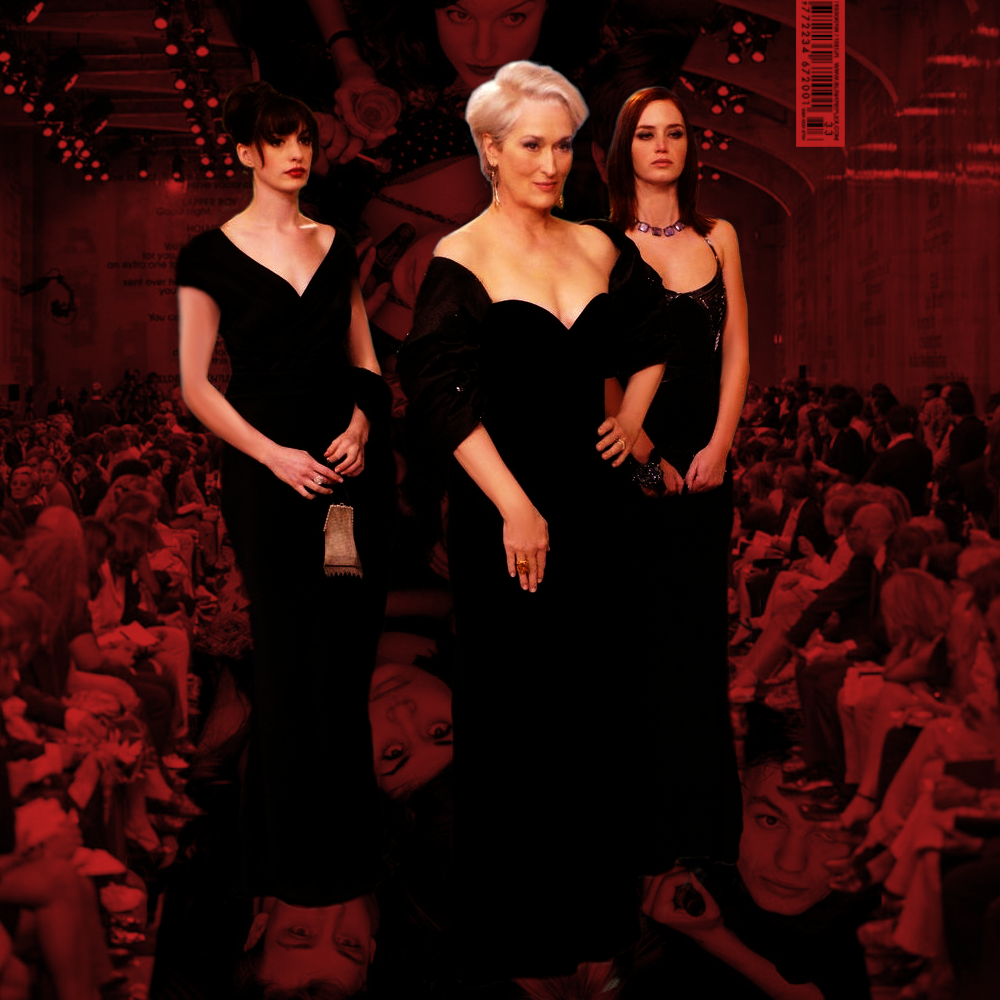Please visit response.fsu.edu for official FSU updates and resources.
The Devil Wears Prada as an Exploration of Cult Culture

When you think about David Frankel’s The Devil Wears Prada, perhaps you think of the star-studded cast. Maybe it’s the iconic fashion that comes to mind. If you’re me, you’re already three quotes and half a laugh deep into the sharp humor. Beyond being a classic 2000s underdog girl boss story, the film poses the world of Runway as a cult and Miranda Priestly as its infallible leader. And the main character, Andy, is only its next unassuming victim.
In order to understand the cult of Runway, we have to start with Priestly, the magazine’s editor-in-chief. In the fashion industry, Miranda Priestly is an all-powerful god. She inspires incredible loyalty from her employees—both out of fear and admiration. When Priestly arrives, panic permeates the entire office. People begin to scramble—changing shoes, makeup, and walking paths for her. The employees cater to Priestly, building an environment she’ll approve of—not that she ever will.
Priestly’s restraint is her ultimate power. Lines like the iconic “That’s all” ensure her employees always feel insignificant, yet her rare praises keep them desperate to please her. The fashion industry is filled with people wanting to be recognized for their talent. Priestly always makes them work relentlessly for a scrap of acknowledgment. This behavior mirrors how cult leaders balance constant control with moments of positive reinforcement. It keeps people invested. Take Andy’s task of delivering unpublished Harry Potter manuscripts as an example. It was an impossible task, and Priestly responded with a simple “Well done.” It’s a comment that doesn’t capture any of Andy's struggles to get the manuscripts, yet Andy craved this approval so desperately that she only follows Priestly more closely.
While Andy, a newcomer, struggles to meet these impossible demands, Priestly’s control is even more evident in two of her most loyal, long-term employees. Nigel, a director at Runway, sacrifices 18 years for Priestly with little reward– trapped by false promises like those high up in cult hierarchies. The other assistant, Emily, is thoroughly sold on what Runway can offer. She sees staying in the office until 10 p.m. as an honor because it means, on some level, she has Priestly’s trust. Yet, once Andy becomes more desirable, she is swiftly replaced and barred from attending Fashion Week.
In my opinion, the reason Priestly truly fits the role of cult leader is the way her manipulations are wrapped in charm. For the public, she dons a curated persona. She smiles. She praises her peers. She is a brilliant leader who garners admiration even from competitors. But, to those on the inside, she is conniving. It’s not surprising that Andy falls for her tricks.
When we first see Andy, she doesn’t care about fashion. She just needs a job and ends up with one every fashion fanatic would kill for. Enter Runway magazine and its gaggle of employees. Andy is shunned for not conforming to their expectations. She’s told she’s fat, ugly, stupid, and ignorant. She is all of those things until she isn’t.
Cue an iconic movie makeover.
Andy is gaslit into becoming part of the in-group, and she’s not alone. Anyone who’s purchased a magazine similar to Runway knows that the fashion industry is full of similar sentiments. What begins as a superficial makeover quickly evolves into a psychological one. As she conforms outwardly to Runway’s standards, she begins internalizing their values, sacrificing her integrity. She prioritizes being a part of Miranda Priestly’s institution over her relationships.
Post-makeover, Andy is quick to defend her new life. She goes from wanting to quit her job to telling her father it’ll open future doors. By this point, Andy has been thoroughly indoctrinated into the Runway cult. She justifies her harmful new reality and distances herself from her past connections. Andy accuses her boyfriend, Nate, of thinking fashion is stupid, a viewpoint she’d held until recently. Her friends, family, and partner can only walk away, chastising her for “drinking the Kool-Aid.” To Andy, ridding herself of her old life is a necessity. A hallmark of cult behavior.
The leader convinces their followers that personal sacrifice is justified and necessary. By Paris Fashion Week, Priestly’s place as a cruel leader is well-established, and Andy has completely sold herself out to her surroundings. Priestly manipulates Andy into believing Emily’s absence is her fault, making Andy doubt her own agency. She does this by posing Andy’s actions as inevitable; for Andy to succeed, Emily had to fail. This scene opens Andy’s eyes and allows her to finally walk away from Runway.
Still, Andy can’t return to the same character she began as. When Priestly sees her on the street, she sees a success story. Andy left Runway but was still shaped by Priestly’s approval. She’d molded someone into the epitome of her magazine’s audience– someone intelligent and desirable who could conform. Andy left Runway a size two trophy Priestly can claim she carved. Like many people who leave cult environments, Andy’s physical departure from Runway cannot erase the psychological transformation.
The Devil Wears Prada doesn’t just offer a glimpse into the world of fashion; it reveals how corporate environments operate with cult-like power structures. Miranda Priestly’s reign at Runway is built on more than authority. Her manipulation, praise, and charm allow her to remain all-powerful. Through Runway’s employees, we see how members of these environments become complicit in their exploitation, giving until there’s nothing left to give. Andy’s journey from ignorant outsider to willing participant echoes classic indoctrination experiences. By the time she walks away, it’s clear the toxic culture has left its mark. Ultimately, The film critiques how high-stakes industries can trap individuals in toxic hierarchical relationships and how those at the top stay at the top by fostering environments where success comes from conformity, not talent. In doing so, the movie becomes both a cult classic and a depiction of cult-like dangers in competitive industries.
Writer: Darby Shelton
Artist: Brooke Barnes



